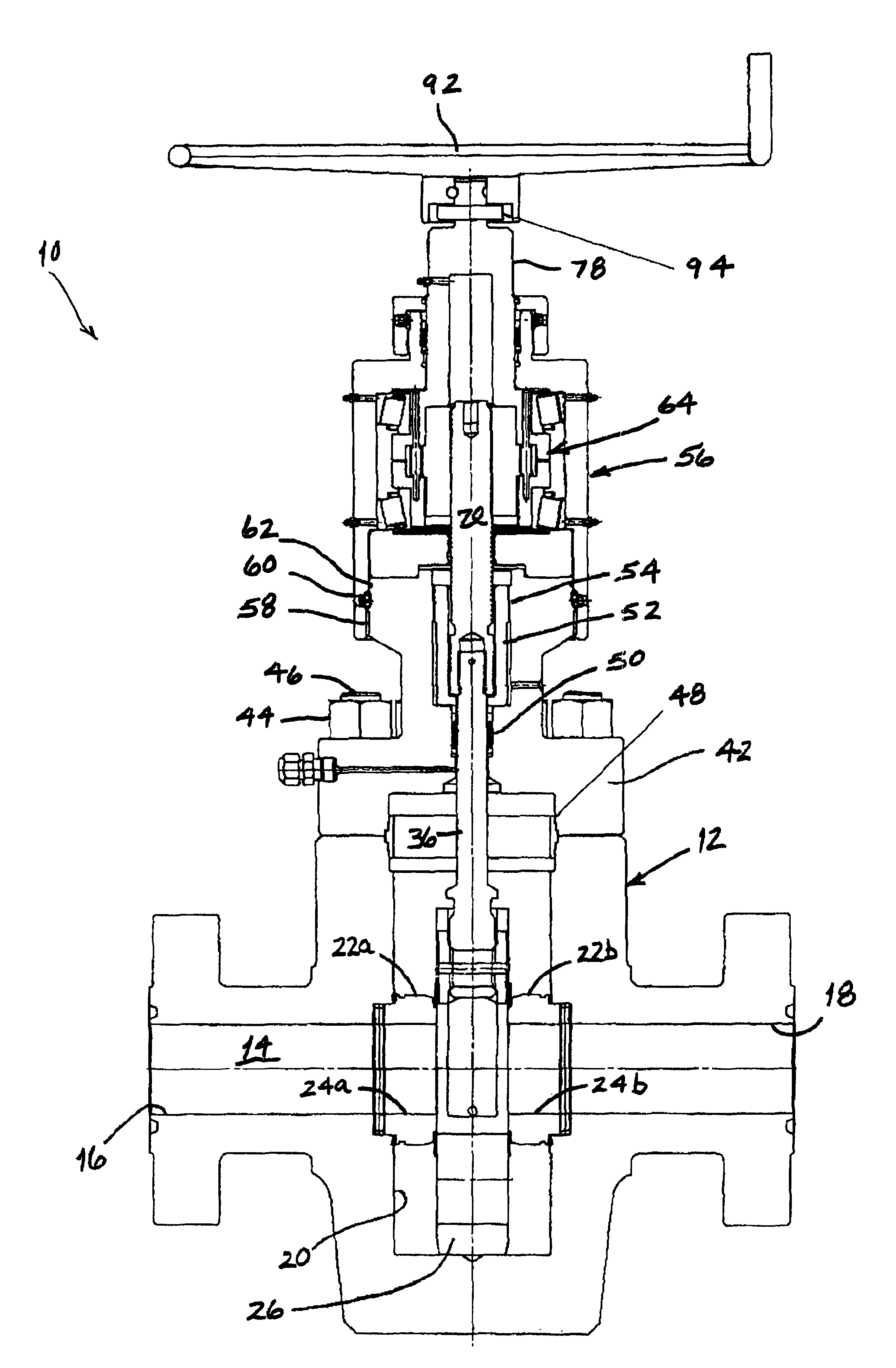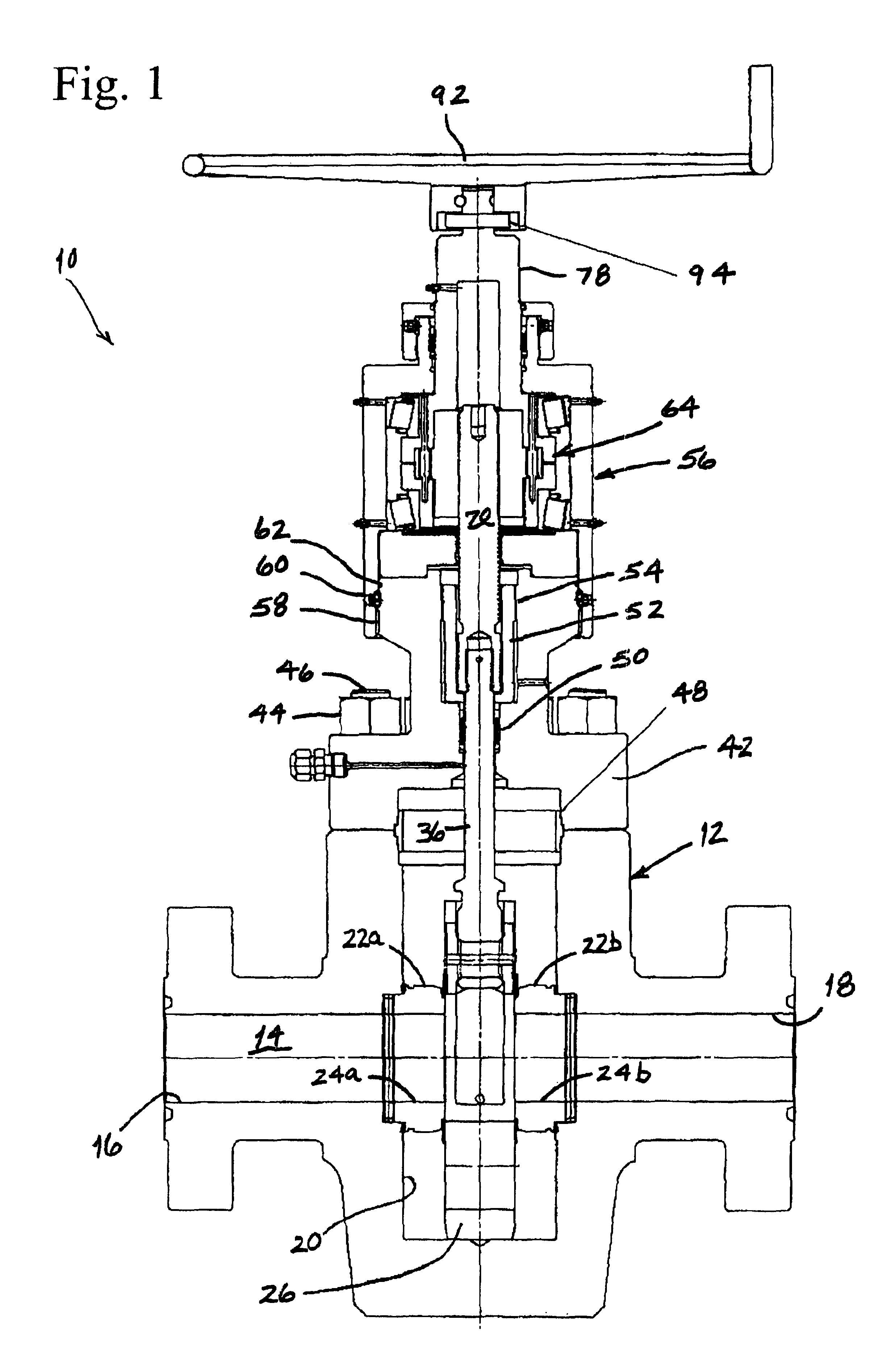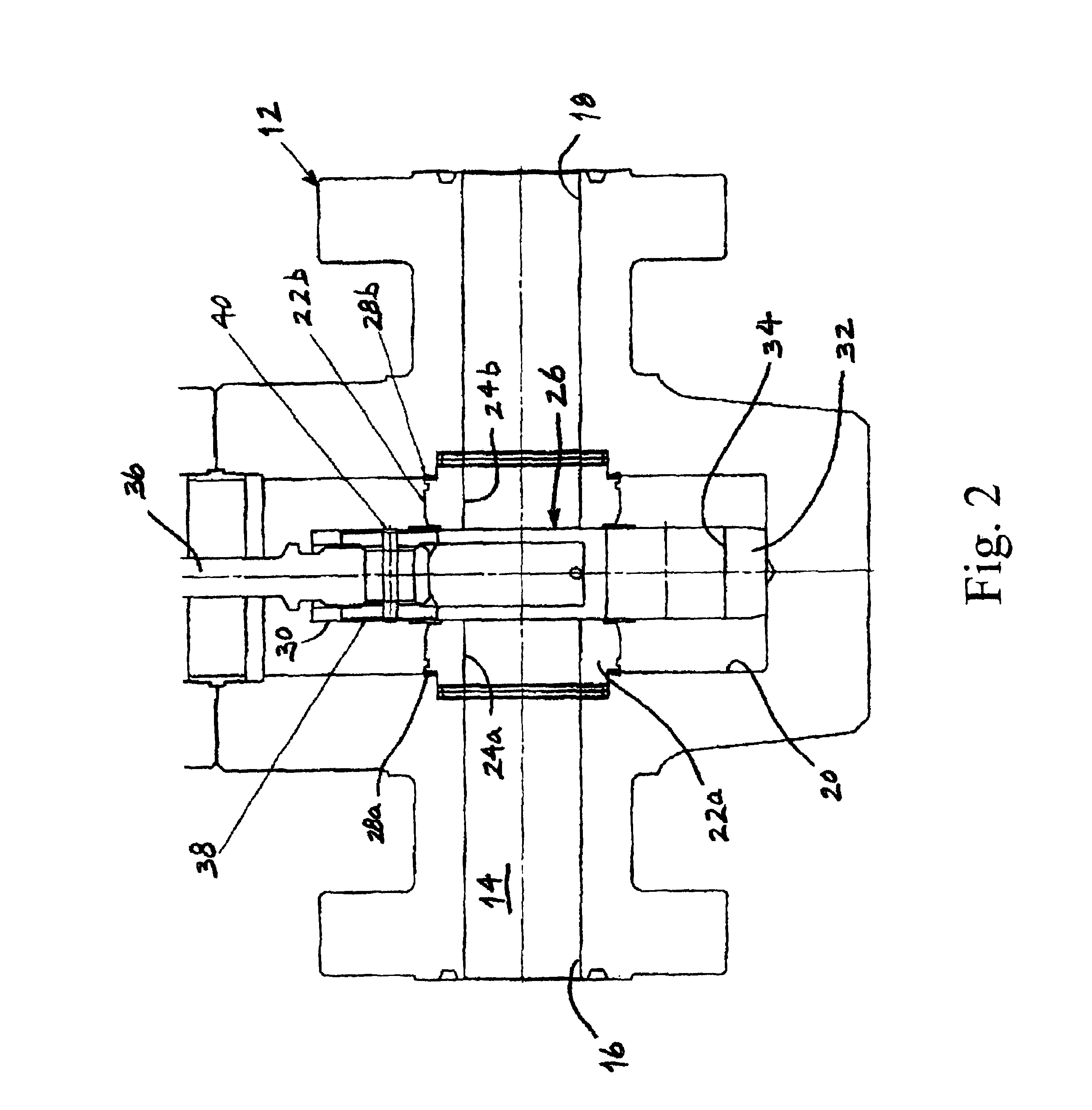Reduced torque gate valve with roller screw
a gate valve and roller screw technology, applied in the field of gate valves, can solve the problems of increased cost and complexity, increased force, and more torque to be applied to the handwheel than is practical to exert, and achieve the effect of raising and lowering the ga
- Summary
- Abstract
- Description
- Claims
- Application Information
AI Technical Summary
Benefits of technology
Problems solved by technology
Method used
Image
Examples
Embodiment Construction
[0019]Referring to FIG. 1, the gate valve of the present invention, which is indicated generally by reference number 10, is shown to comprise a valve body 12 which comprises a flow bore 14 that extends longitudinally through the valve body between a first port 16 and a second port 18 and a gate cavity 20 that extends partially through the valve body generally transverse to the flow bore. The gate valve 10 also comprises a pair of seats 22a, 22b, each of which is positioned at least partially in a corresponding seat pocket that is formed at the intersection of the flow bore 14 and the gate cavity 20. Each seat 22a, 22b includes a transverse bore 24a, 24b that is aligned with the flow bore 14 to thereby define a flow passage through the valve body 12.
[0020]Referring also to FIG. 2, the gate valve 10 further includes a gate 26 which is slidably disposed between the seats 22a, 22b, each of which is preferably urged into contact with the gate by a respective Belleville spring 28a, 28b. T...
PUM
 Login to View More
Login to View More Abstract
Description
Claims
Application Information
 Login to View More
Login to View More - R&D
- Intellectual Property
- Life Sciences
- Materials
- Tech Scout
- Unparalleled Data Quality
- Higher Quality Content
- 60% Fewer Hallucinations
Browse by: Latest US Patents, China's latest patents, Technical Efficacy Thesaurus, Application Domain, Technology Topic, Popular Technical Reports.
© 2025 PatSnap. All rights reserved.Legal|Privacy policy|Modern Slavery Act Transparency Statement|Sitemap|About US| Contact US: help@patsnap.com



